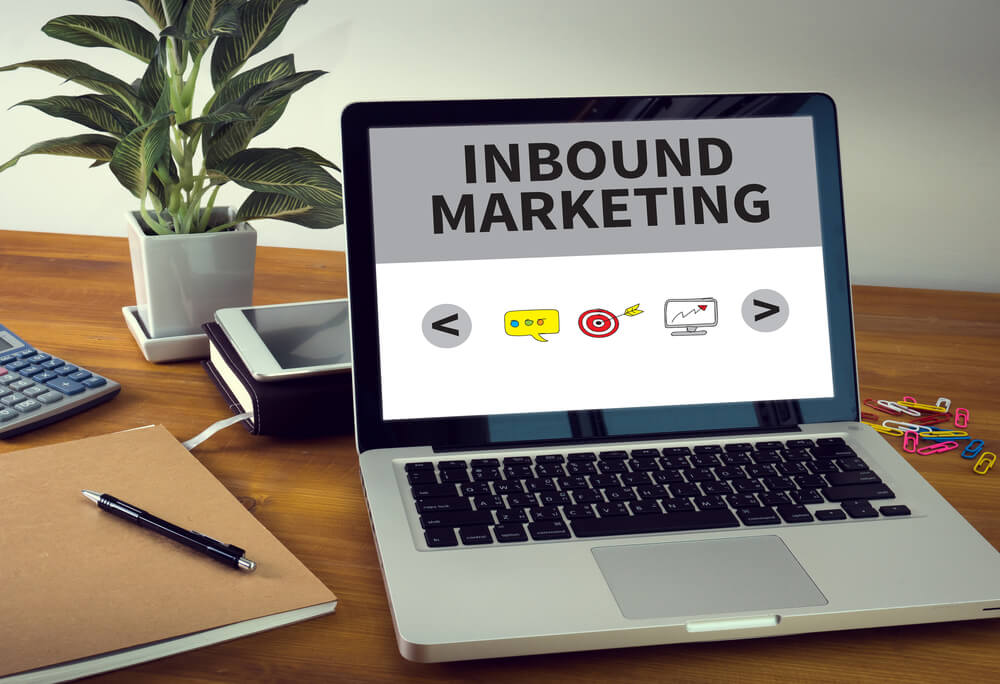
Easy Guide for SaaS Inbound Marketing ROI and Tips To Try
Inbound software as a service (SaaS) marketing differs from regular inbound marketing by emphasizing client education about the software's unique value propositions and functionalities.
SaaS products are highly technical, requiring content that addresses specific pain points and showcases their capabilities. SaaS inbound marketing strategies involve extensive free trials, demos, and educational content to guide prospects through decision-making.
This article focuses on the following topics:
- How to get inbound marketing ROI.
- How to improve inbound marketing ROI.
A SaaS marketing agency can help boost revenue by improving inbound marketing and conquering the challenges in SaaS marketing. Let’s go!
Want to know how we help SaaS businesses stand out from the crowd? Watch this video to learn how DAP makes it happen!
How to Determine Inbound Marketing ROI for SaaS

Determining inbound marketing ROI for SaaS is complex and requires the following steps:
1. Define Clear Objectives
Clearly outline inbound marketing goals, whether increasing website traffic, generating leads, or driving conversions. Align these objectives with the overall business goals and SaaS product strategy.
2. Establish Key Performance Indicators (KPIs)
Identify and set measurable KPIs relevant to the SaaS business such as website visits, lead conversion rates, trial sign-ups, and customer acquisition costs. These metrics serve as benchmarks for evaluating the success of inbound efforts.
3. Implement Tracking Mechanisms
Utilize analytics tools, such as Google Analytics or other marketing automation platforms, to track user behavior across the website and other marketing channels. Implement urchin tracking module (UTM) parameters for accurate source attribution, distinguishing traffic sources from different campaigns.
4. Calculate Costs
Determine the costs associated with the inbound marketing activities, including content creation, advertising, software subscriptions, and personnel spending. This comprehensive view of expenses ensures a more accurate assessment of the overall investment.
5. Evaluate Customer Lifetime Value (CLV)
Assess the long-term value of customers acquired through inbound marketing efforts. Consider factors such as average subscription length, upsell potential, and customer retention rates. Understanding CLV provides insights into the sustainability and profitability of the customer acquisition strategy.
6. Use Attribution Modeling
Implement an attribution model to connect conversions to specific touchpoints along the customer path. Attribution helps identify the most effective channels and campaigns contributing to lead generation and customer acquisition, providing a better understanding of the impact of inbound marketing.
7. Perform Regular Analysis and Adjustments
Periodically analyze performance data, comparing KPIs against initial objectives. Adjust the inbound marketing strategy based on insights gained from the data. This iterative process makes sure of continuous ROI improvement and optimization over time.
By following the techniques of SaaS marketing agencies, SaaS companies can methodically assess the effectiveness of their inbound marketing efforts and make data-driven decisions to maximize ROI.
Tips for Improving ROI for SaaS Inbound Marketing

SaaS companies may improve their inbound marketing ROI with the following tips:
1. Optimize Targeted Content
Content optimization ensures that the marketing messaging resonates with the target audience's needs and pain points. Tailored content demonstrates a deep understanding of the audience's challenges and positions the SaaS product as a valuable solution.
At each stage of the SaaS buyer's journey, relevant, educational content allows SaaS companies to establish trust, effectively engage prospects, and ultimately drive higher conversions, improving ROI. Here are strategies to optimize targeted content in SaaS marketing:
- Conduct thorough research to understand the target audience's demographics, preferences, and pain points. Create buyer personas to guide content strategy, ensuring messaging is tailored to address the specific needs of ideal customers.
- Identify relevant keywords that resonate with the audience and integrate them strategically into the content.
- Develop content that educates the audience about industry trends, challenges, and best practices. Position the SaaS solution as a valuable resource by offering in-depth guides, whitepapers, and webinars.
- Personalize content delivery. Address individuals by name in emails, tailor recommendations based on user behavior, and customize landing pages.
- Diversify content distribution across various channels, including social media, email, and industry forums. Meet the audience where they are, making certain of a consistent and cohesive message across different platforms.
- Seek and incorporate feedback from the audience to refine content strategy. Monitor comments, social media interactions, and customer reviews to understand how the content resonates and adjust the approach as needed.
These tips can optimize targeted content to better align with the audience's needs, ultimately improving the effectiveness of marketing efforts and enhancing ROI.
2. Refine Lead Nurturing Strategies
Refining lead nurturing strategies enables companies to guide potential customers through the complex SaaS purchasing process. A well-crafted lead nurturing campaign fosters relationships with prospects, providing them with the correct information at the right time to address concerns and build trust.
Engaging leads with personalized content and strategic touchpoints increases conversion rates, shortens sales cycles, and enhances ROI. Consider these lead nurturing strategies from SaaS marketing agencies:
- Divide leads into segments based on their behavior, preferences, and position in the sales funnel. Tailor lead nurturing content for each segment, providing personalized information addressing their needs and concerns.
- Develop a content strategy that aligns with the different stages of the buyer's journey. Deliver timely and relevant content at each stage, gradually guiding leads through decision-making.
- Utilize marketing automation tools to send targeted emails, educational resources, and product information based on lead interactions.
- Implement a lead scoring system to prioritize and focus efforts on leads most likely to convert. Assign scores based on lead interactions, content engagement, and other relevant factors.
- Engage leads through multiple channels such as email, social media, webinars, and personalized landing pages.
- Set up automated drip campaigns that deliver pre-scheduled emails to leads over time. Personalize these messages to address common questions, highlight key features, and gradually build a case for the value of the SaaS solution.
Regularly analyze the performance of lead nurturing campaigns using metrics such as open rates, click-through rates (CTRs), and conversion rates. Use the insights gained to refine strategies and adjust content, messaging, and timing to better align with lead behavior and preferences.
3. Leverage Free Trials and Demos
Leveraging free trials and demos provides potential customers with hands-on experience, allowing them to understand the value and functionality of the software before committing to a purchase.
Free trials and demos reduce the perceived risk associated with SaaS adoption, encouraging more prospects to explore the product. Offering a tangible experience of the SaaS solution's benefits increases conversion rates, boosts customer confidence, and enhances revenue. Create free trials and demos for SaaS products using these tips:
- Make sure that the onboarding process for free trials and demos is seamless and user-friendly. Provide clear instructions, intuitive navigation, and helpful tooltips to guide users through the initial setup.
- Create a sense of urgency by offering limited-time access to premium features or extended trial periods.
- Support free trials and demos with comprehensive educational resources, including tutorials, documentation, and frequently asked questions (FAQs).
- Implement automated email sequences to follow up with trial users, providing additional insights, tips, and case studies that showcase the software's value.
- Offer interactive demos that allow potential customers to test key features in a guided environment.
Actively seek feedback from users during and after the trial or demo period. Use surveys, interviews, or feedback forms to understand user experiences, identify pain points, and address any barriers to conversion.
4. Implement A/B Testing
A/B testing is essential for improving SaaS marketing ROI as it allows companies to optimize various elements of their campaigns. SaaS marketers can identify the most effective variations that resonate with their target audience by experimenting with different ad copies, landing page designs, and calls to action (CTAs).
This data-driven approach ensures continuous improvement, higher engagement, better conversion rates, and enhanced ROI for SaaS marketing efforts. Perform A/B tests with these techniques in mind:
- Conduct A/B testing on various ad copies to determine which messaging resonates most effectively with the target audience.
- Experiment with different value propositions, tones, and CTAs to identify the most compelling messaging to drive user engagement.
- Test different layouts, color schemes, and content structures for landing pages to understand how these elements affect user behavior.
- Pay attention to page load times and mobile responsiveness to verify a seamless user experience, which leads to higher conversion rates.
- Experiment with different CTA button text, colors, and placements to find the combination that encourages the most conversions.
- Assess the impact of different images or multimedia elements in marketing materials. Test variations to see how visuals influence user engagement and comprehension of the SaaS product's value.
- Utilize A/B testing for email campaigns by experimenting with subject lines, content formats, and sending times.
- Analyze email open rates, CTRs, and conversion rates to optimize email content and improve overall engagement with the audience.
- Test different pricing models, discounts, or promotional offers to understand how these factors affect user decisions.
Consistent A/B testing across various aspects of the SaaS marketing strategy provides valuable insights into what resonates best with the audience, enabling firms to make data-driven decisions that maximize the effectiveness of their campaigns and improve ROI.
5. Enhance User Experience (UX)
Enhanced UX is critical for improving SaaS marketing ROI and customer success. This factor directly influences how potential customers interact with and perceive the product. An ideal UX, characterized by intuitive navigation, clear communication, and a visually appealing interface, builds trust, and increases the likelihood of conversion.
Prioritizing a seamless user journey allows SaaS companies to reduce bounce rates, foster customer satisfaction, and realize higher returns on their marketing investments. Consider these best practices to improve UX in SaaS inbound marketing:
- Confirm that the SaaS website has a clean, intuitive design with straightforward navigation. Prioritize a user-friendly interface that guides visitors smoothly through the site.
- Optimize the website and digital assets for mobile devices to accommodate users accessing the SaaS product on smartphones or tablets.
- Simplify the sign-up or registration process for free trials or demos. Minimize the number of steps and required information and consider implementing social media logins to reduce friction.
- Make sure that the messaging on the website and in marketing materials is clear, concise, and focused on highlighting the unique value propositions of the SaaS solution.
- Avoid jargon and technical language that may confuse potential users and instead straightforwardly emphasize the benefits.
- Incorporate interactive product demos that allow users to explore key features and functionalities firsthand.
- Establish feedback mechanisms such as surveys, user interviews, and analytics tools to collect insights on user experiences. Actively seek feedback on website usability, feature preferences, and overall satisfaction.
Summing Up
By incorporating these tips into the SaaS inbound marketing strategy, companies can enhance the effectiveness of their campaigns, engage prospects more effectively, and ultimately improve the ROI of their SaaS marketing efforts.
Find out how increasing SaaS inbound marketing efforts can benefit ROI. Contact Digital Authority Partners (DAP), the top SaaS marketing agency, for the best digital marketing strategies to boost your SaaS firm’s revenue. Call DAP today!
Want To Meet Our Expert Team?
Book a meeting directly here




